1. The Birth of Apple TV: A New Vision for the Living Room
When Apple first hinted at its entry into home entertainment in the mid-2000s, the company was already famous for its disruptive innovations in personal computing, music, and mobile devices. In September 2006, during a much-anticipated keynote, Steve Jobs unveiled a prototype under the codename “iTV.” The concept was simple yet ambitious: create a device that would bring your digital media collection—music, movies, TV shows, and photos—to the living room without the need for a computer.
Initially designed as a companion device for iTunes, Apple TV was meant to fill a glaring gap in home entertainment. At that time, most households relied on separate, clunky devices for cable, DVD playback, and computer streaming. Apple’s solution was elegantly minimalistic—a sleek, small box that could connect to your television via HDMI and tap into your iTunes library over your home network. When the first-generation Apple TV was officially released in early 2007, it generated considerable excitement among Apple enthusiasts and set the stage for a new era of digital media consumption.
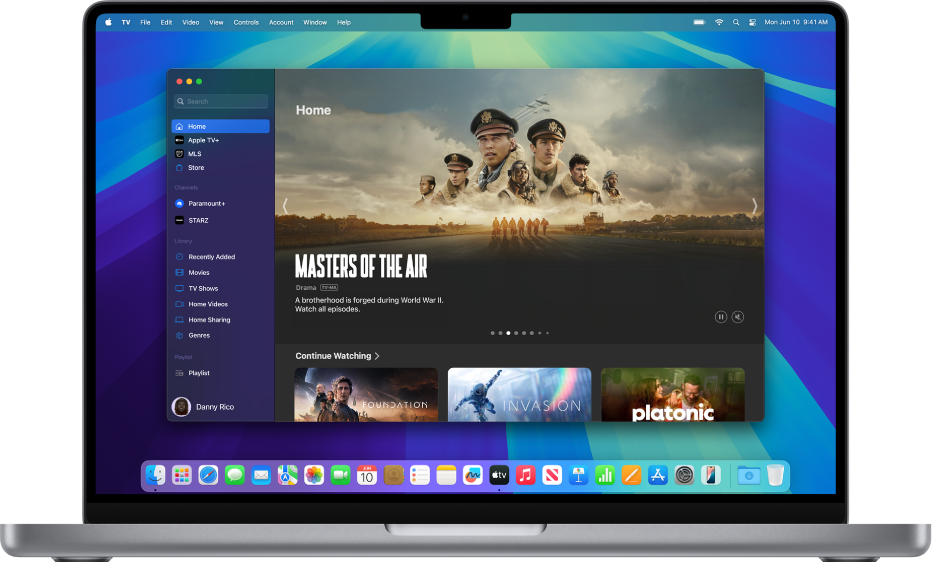
Concept and Launch
The original Apple TV was a bold experiment. It was essentially a dedicated iTunes player that could store media on an internal hard drive (available in 40 GB or 160 GB models) and stream content from your computer. While it didn’t have the bells and whistles of today’s streaming boxes, its design was revolutionary for its time. Steve Jobs emphasized that the device was not meant to replace your television but to enhance it—transforming the living room into a digital media center with the simplicity and elegance that Apple was known for.
Critics and early adopters alike were intrigued by the possibilities. The ability to rent or purchase movies directly on the device and stream photos and music without a PC in sight was a glimpse into the future of home entertainment. Over time, as digital media consumption became increasingly mainstream, Apple TV began to build a loyal following, setting the stage for its evolution into a multifaceted device.
2. From Streaming Box to Entertainment Hub: The Evolution of Hardware
First Generation: Laying the Groundwork
The first-generation Apple TV laid the foundation with its focus on simplicity and ease of use. Based on a modified version of Mac OS X 10.4 Tiger, it featured a built-in hard drive and was designed primarily for syncing with iTunes. Its limited connectivity options—relying on HDMI, component video, and Ethernet—reflected the era’s technology. Although primitive by today’s standards, the original Apple TV was a crucial stepping stone that demonstrated the viability of a dedicated digital media player in the living room.
Second and Third Generations: Embracing a Wireless Future
In 2010, Apple introduced the second-generation Apple TV—a significant redesign that shifted from a hard-drive-based system to one that relied on flash storage and streaming. Without a built-in hard drive for media storage, this generation depended on wireless connectivity (Wi-Fi and Ethernet) to stream content in real time. The smaller, more compact design and reduced energy consumption made it more attractive to consumers, while the inclusion of the Apple A4 processor heralded a new era of efficiency.
The third-generation Apple TV, launched in 2012, brought further improvements. With support for 1080p playback, the third generation signified Apple’s commitment to enhancing visual quality. It continued using an iOS-based operating system, which allowed for more fluid integration with other Apple devices. A hardware revision in 2013—often referred to as “Rev A”—optimized power consumption and improved overall performance, setting the stage for even more dramatic upgrades in subsequent models.
The Fourth Generation and Beyond: tvOS and the App Revolution
The turning point for Apple TV came with the introduction of the fourth generation in September 2015. With this release, Apple rebranded its media player as a device running tvOS—an operating system based on iOS designed specifically for the living room. This was a radical transformation. Gone were the days when Apple TV was just an iTunes player; tvOS ushered in the age of the App Store for TV, enabling third-party developers to create apps, games, and interactive experiences tailored for the big screen.
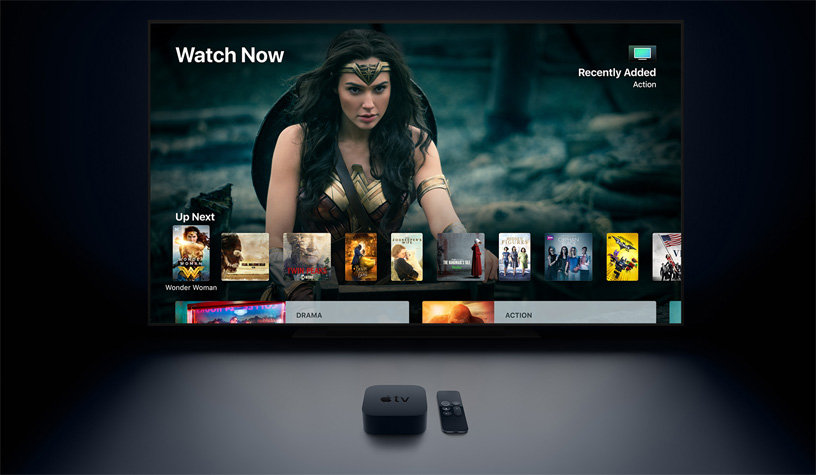
Key features of the fourth-generation Apple TV included:
- A Redesigned Interface: The new user interface was crafted for a “10-foot” viewing experience, making navigation via the touch-sensitive Siri Remote both intuitive and engaging.
- The Siri Remote: Apple’s new remote introduced multi-touch gestures and voice control through Siri, allowing users to search, control playback, and even command smart home devices—all with a simple press of a button.
- tvOS and the App Store: The launch of tvOS transformed the device into a full-fledged entertainment hub, where users could download apps for streaming services, games, and utility tools. This opened up a vast ecosystem of content that extended far beyond the confines of iTunes.
Subsequent iterations, including the Apple TV 4K models released in 2017, 2021, and 2022, have built upon this foundation by offering enhanced performance, 4K HDR support, faster processors, and improved connectivity options such as Gigabit Ethernet and support for Wi-Fi 6. The evolution from HD to 4K also brought advancements in audio and video quality, with support for Dolby Atmos, HDR10, and Dolby Vision—ensuring that viewers experience cinema-quality visuals and sound from the comfort of their homes.
Hardware Innovations and Ecosystem Integration
One of Apple TV’s most significant achievements is how it has integrated with the broader Apple ecosystem. Over the years, Apple has ensured that Apple TV works seamlessly with iPhones, iPads, Macs, HomePods, and even the Apple Watch. Features like AirPlay enable users to mirror content from their Apple devices directly to their TV, while HomeKit integration transforms Apple TV into a central hub for controlling smart home devices. The Siri Remote further enhances this connectivity, allowing voice commands that can control everything from volume to lighting, making it a vital part of a smart home setup.
Apple’s continuous innovation is also evident in its commitment to quality and security. Regular software updates ensure that Apple TV stays current with the latest features and improvements, while tight integration with the tvOS ecosystem guarantees that the user experience remains smooth and secure. From the early days of streaming content to the modern era of interactive, app-driven entertainment, Apple TV has consistently pushed the boundaries of what a digital media player can achieve.
3. The Impact of Apple TV on Media Consumption
Redefining Home Entertainment
Apple TV has played a pivotal role in reshaping how consumers interact with media in their homes. By bridging the gap between traditional television and the digital world, Apple TV has allowed users to stream a vast array of content—from movies and TV shows to music and podcasts—without the need for multiple devices cluttering the living room. This consolidation of media has simplified the user experience, providing a single platform that offers diverse content options and services.
The launch of tvOS and the App Store for Apple TV was a watershed moment. It democratized access to content by allowing independent developers to create apps that cater to niche interests and regional preferences. This has not only enriched the content ecosystem but also encouraged innovation in user interface design, interactivity, and content delivery. For example, interactive gaming, educational apps, and even productivity tools have found a place on Apple TV, turning it into more than just a passive media consumption device.
Streaming Wars and Apple TV+
As streaming services continue to proliferate, Apple TV+ has emerged as a key player in the digital content landscape. Although Apple TV+ does not offer as extensive a library as some of its competitors, its focus on high-quality original programming has garnered critical acclaim and a loyal fan base. Shows like “Ted Lasso,” “Severance,” and “The Morning Show” have set a new standard for storytelling, blending star power with innovative narratives that resonate with global audiences.
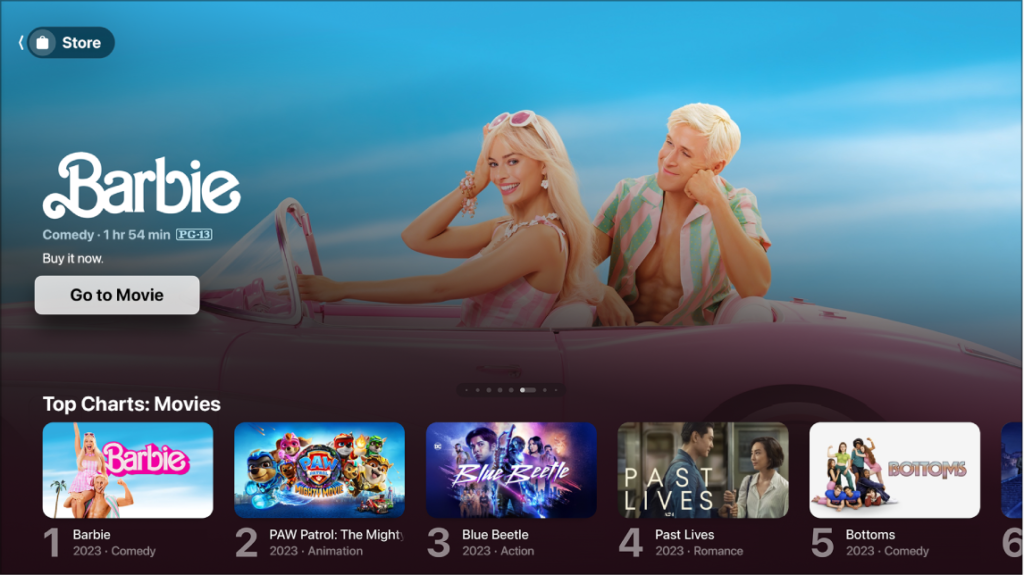
Apple TV+ has leveraged Apple’s brand strength and commitment to quality to position itself as a premium service. Its integration with the Apple TV app means that subscribers can enjoy a unified viewing experience, regardless of whether they are watching on an Apple device, a smart TV, or even an Android device via the Apple TV app. The seamless sync feature across devices—powered by iCloud—ensures that viewers can pick up right where they left off, reinforcing the convenience of a connected ecosystem.
Changing Consumer Behavior
The advent of Apple TV has also influenced consumer behavior, shifting the focus from traditional cable subscriptions to on-demand streaming. As more households cut the cord, the ability to access a wide range of content on a single, easy-to-use device has become increasingly attractive. Apple TV’s user-friendly interface, combined with features like personalized recommendations via Siri and curated content from the Apple TV app, has made it easier for consumers to discover new shows and movies that align with their interests.
Moreover, the ability to use Apple TV as a smart home hub has further cemented its role in modern households. It’s no longer just about watching TV—Apple TV has become a central control point for managing connected devices, from smart lights and thermostats to security cameras. This multifunctionality has elevated Apple TV from a mere streaming device to an integral part of the smart home revolution.
4. Apple TV’s Software Journey: From iOS-Based Apple TV Software to tvOS
Early Software: The Mac OS X Roots
The original Apple TV ran a modified version of Mac OS X Tiger, complete with an interface reminiscent of Front Row. This version was designed primarily to stream content from iTunes and was tightly integrated with the user’s computer. Although it lacked many of the interactive features that we now take for granted, it set a solid groundwork by demonstrating that a dedicated media player could revolutionize home entertainment.
The iOS Transformation
With the introduction of the second and third-generation Apple TVs, Apple shifted its software strategy by adopting a version of iOS. This change was significant—it meant that Apple TV would now benefit from the vast ecosystem of iOS technologies, including a more intuitive user interface and improved performance. The transition to an iOS-based platform allowed Apple to leverage features like AirPlay, which enabled wireless streaming from iOS devices, further bridging the gap between mobile and home entertainment.
The Birth of tvOS
The launch of the fourth-generation Apple TV in 2015 marked a turning point in the device’s evolution. With tvOS, Apple reimagined the user experience for the living room. tvOS introduced a dedicated App Store for Apple TV, allowing developers to create tailored experiences for the big screen. The new operating system was designed with a “10-foot” interface in mind—icons were larger, navigation was simplified, and the overall aesthetic was more engaging. The introduction of the Siri Remote further enhanced this experience by providing gesture-based controls and voice interaction capabilities.

tvOS also brought new features such as personalized recommendations, improved search capabilities through Siri, and seamless integration with other Apple services like Apple Music and HomeKit. With each subsequent update, tvOS has continued to evolve, incorporating new functionalities like picture-in-picture, support for multiple user profiles, and advanced gaming features.
Continuous Updates and Ecosystem Synergy
One of the key strengths of Apple TV is its regular software updates. Apple has consistently pushed updates that not only improve performance and security but also introduce new features that enhance the overall user experience. The synergy between tvOS and the broader Apple ecosystem is one of its most compelling aspects—whether it’s using your iPhone to control your Apple TV via the Remote app, sharing content with AirPlay, or integrating with HomeKit to control smart devices, every update is designed to create a more seamless, connected experience.
For example, the integration of the Home app with Apple TV has transformed the device into a central hub for smart home control. With tvOS updates, Apple has expanded the capabilities of Apple TV beyond entertainment, turning it into a critical component of a connected home. Voice commands via Siri not only search for content but can also adjust the lighting, control thermostats, or even lock doors—all from the comfort of your living room.
5. The Apple Ecosystem: How Apple TV Connects Everything
A Unified Experience Across Devices
One of Apple’s most enduring strengths is its ecosystem—devices and services that work harmoniously together. Apple TV is a cornerstone of this ecosystem, providing a seamless bridge between personal devices (iPhone, iPad, Mac) and the communal experience of the living room. Whether you’re streaming a movie, playing a game, or controlling smart home devices, Apple TV brings all these functions under one roof.
For instance, AirPlay allows you to mirror your iPhone or iPad’s screen directly onto your TV. This is particularly useful for sharing photos, videos, or even a presentation with friends and family. Moreover, the integration with iCloud ensures that your media library is always up-to-date and accessible across all your devices. This level of integration not only enhances convenience but also reinforces brand loyalty by ensuring that every Apple device feels like part of a larger, connected family.
HomeKit and the Smart Home Revolution
Beyond media consumption, Apple TV plays a pivotal role in Apple’s vision for the smart home. With HomeKit support, Apple TV can serve as a home hub, allowing you to control lights, locks, thermostats, and more. This functionality means that your TV is no longer just an entertainment device—it’s a central control point for managing your entire home. The Siri Remote further enhances this by enabling voice commands to control smart devices, making it easier than ever to automate your home environment.
The convergence of entertainment and home automation in Apple TV exemplifies how Apple is redefining what a television can be. Instead of being a passive screen, Apple TV has become an interactive, multi-functional device that enhances daily living, providing both relaxation and practical utility.
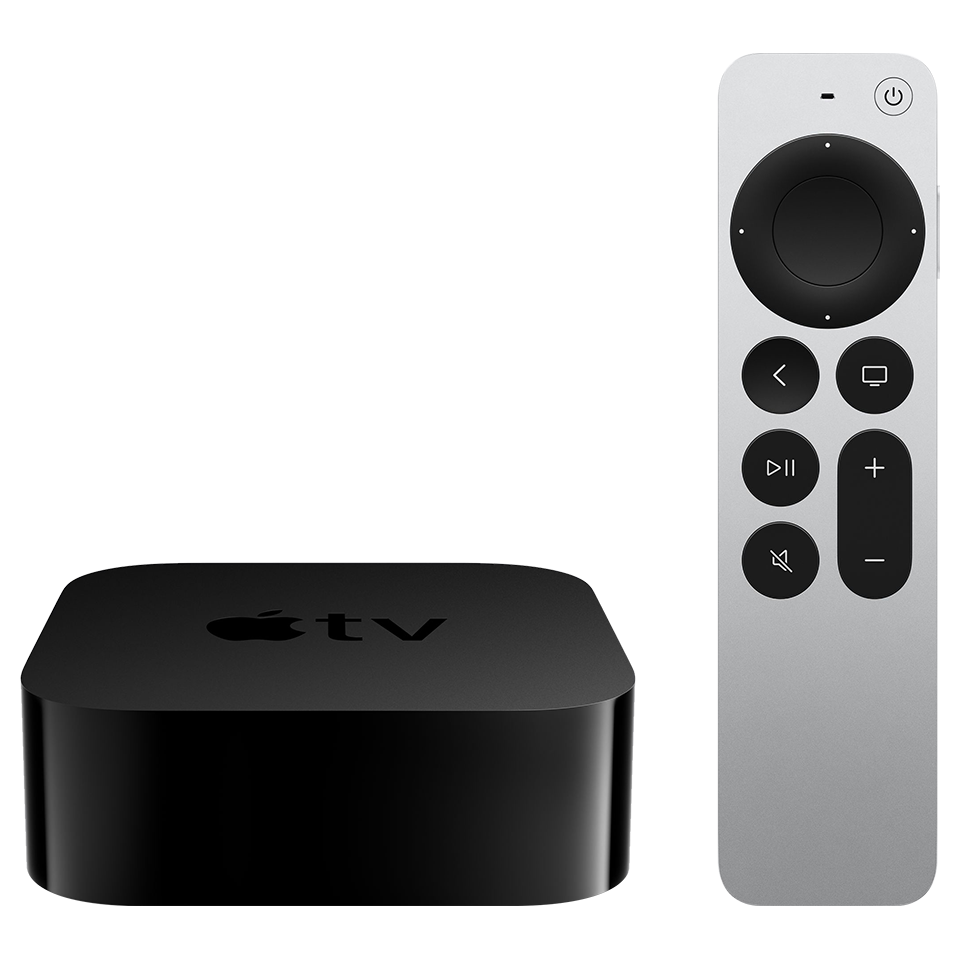
Integration with Apple TV+
Apple TV+ represents Apple’s commitment to original content. Launched alongside the revamped hardware and tvOS, Apple TV+ is a streaming service that focuses exclusively on high-quality, original programming. Despite having a smaller library than some of its competitors, Apple TV+ has quickly garnered acclaim for its star-studded projects and innovative storytelling.
What makes Apple TV+ truly unique is its integration with the hardware. The Apple TV app on your device provides a unified interface that not only allows you to watch content from Apple TV+ but also integrates with your existing subscriptions, such as those for streaming channels and even sports packages like MLS Season Pass. This holistic approach ensures that users have a one-stop-shop for all their entertainment needs, making it easier to discover, purchase, and enjoy content without juggling multiple apps.
The Future: Rumors and Innovations
Looking forward, the evolution of Apple TV appears to be set on an exciting trajectory. Rumors suggest that Apple is already working on next-generation models that will feature even more powerful hardware, enhanced connectivity (possibly with next-gen Wi-Fi and Bluetooth technologies), and deeper integration with emerging technologies such as augmented reality (AR) and virtual reality (VR). In addition, upcoming updates to tvOS are expected to further refine the user interface and expand functionality, particularly in the realm of gaming and smart home integration.
Industry analysts predict that future iterations of Apple TV will not only focus on improving content delivery but also on leveraging machine learning to offer even more personalized experiences. Imagine a device that learns your viewing habits and optimizes its recommendations in real time—or one that can automatically adjust the home environment to match your mood based on the content you’re watching.
6. Apple TV+ and the Streaming Wars
A New Contender in a Crowded Market
In the last decade, the streaming landscape has exploded with competitors like Netflix, Amazon Prime Video, Hulu, Disney+, and HBO Max vying for market share. Apple TV+ entered this arena with a different strategy. Instead of amassing a vast library of content, Apple TV+ has focused on producing a smaller, curated selection of high-quality, original shows and movies.
The Impact of Original Content
Apple TV+ has already made waves with its critically acclaimed originals. Shows like “Ted Lasso” have become cultural phenomena, celebrated for their heartwarming narratives and strong character development. Similarly, series such as “Severance” and “The Morning Show” have demonstrated Apple’s commitment to innovative storytelling that pushes boundaries.
By investing in original content, Apple TV+ has positioned itself as a service for discerning viewers who value quality over quantity. This approach has resonated with audiences who are tired of formulaic, mass-produced programming. Moreover, the involvement of renowned directors, writers, and actors in Apple TV+ productions has helped elevate the platform’s reputation, drawing in viewers who might otherwise have been loyal to other services.
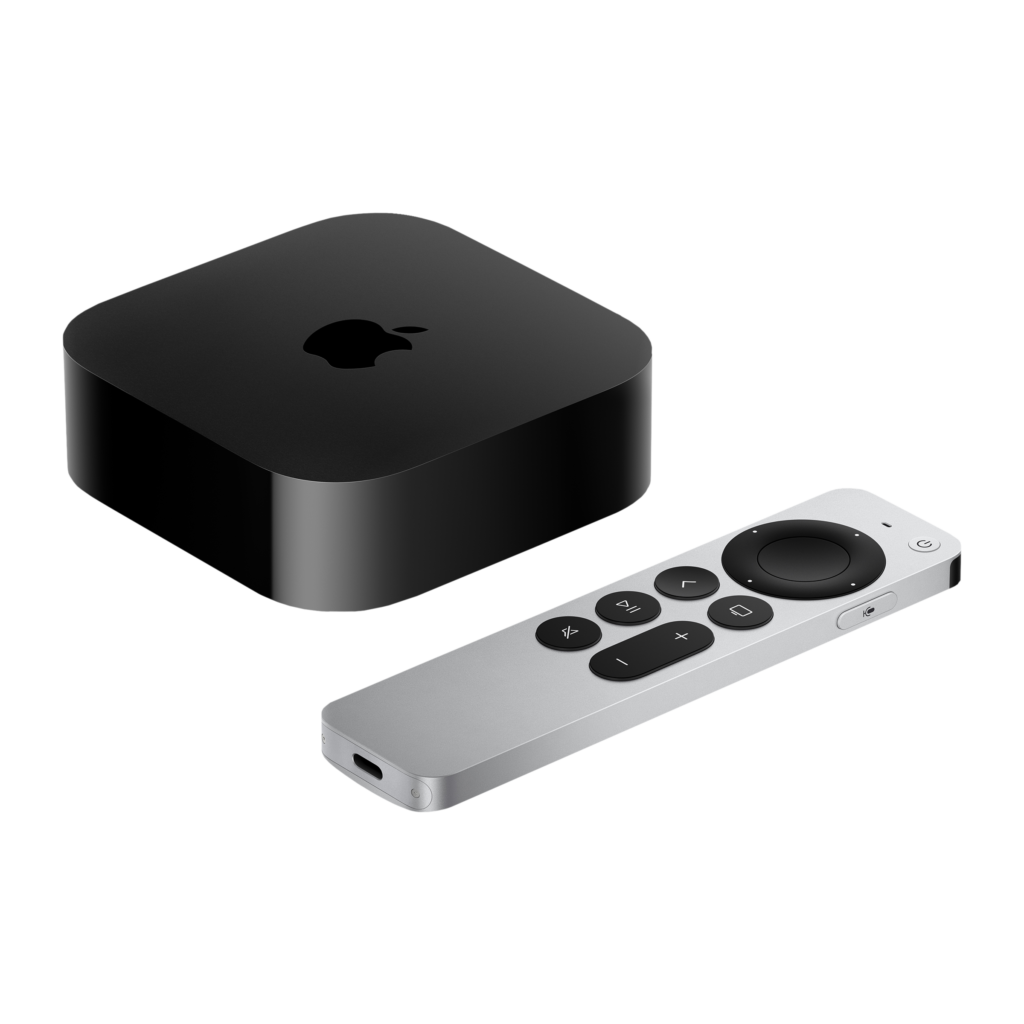
Competitive Advantages
Apple TV+ benefits from several competitive advantages:
- Seamless Integration: As part of the Apple ecosystem, Apple TV+ works effortlessly with other Apple devices. This integration makes it easier for users to access and share content across devices.
- Premium Production Values: Apple’s investment in high-quality original content ensures that its shows and films stand out for their production quality, innovative storytelling, and attention to detail.
- Brand Trust: Apple’s reputation for quality and innovation extends to its streaming service. Consumers who trust Apple for their personal devices are more likely to give Apple TV+ a try.
- Unified Experience: The Apple TV app consolidates content from Apple TV+, as well as other streaming services and channels, providing a unified, user-friendly interface that simplifies the viewing experience.
The Future of Streaming on Apple TV+
As the streaming wars continue to intensify, Apple TV+ is well-positioned to capture a dedicated audience by focusing on quality, exclusivity, and integration with the broader Apple ecosystem. Future updates to tvOS may include additional features such as enhanced recommendations powered by artificial intelligence, improved parental controls, and even more interactive content that blurs the line between traditional TV and interactive gaming.
Furthermore, the potential expansion of Apple TV+ content into international markets, along with strategic partnerships for live sports and events, could further boost its appeal. Apple’s consistent focus on innovation and user experience means that Apple TV+ is likely to remain a strong contender in the competitive streaming landscape for years to come.
7. Consumer Experience: Setting Up and Using Apple TV Today
Unboxing and Setup
Setting up an Apple TV today is a breeze. When you unbox the latest Apple TV 4K, you’re greeted by a sleek, minimalist design that reflects Apple’s commitment to simplicity and elegance. The package includes the Apple TV unit, a Siri Remote, and all necessary cables (HDMI, power, etc.). The design philosophy remains consistent with Apple’s aesthetics—a clean, unobtrusive look that fits seamlessly into any living room décor.
The setup process is straightforward. Simply connect your Apple TV to your television via HDMI, power it up, and follow the on-screen instructions to connect to your Wi-Fi network and sign in with your Apple ID. The intuitive interface, powered by tvOS, guides you through each step, ensuring that even less tech-savvy users can get online and start streaming within minutes.
Navigating tvOS: A 10-Foot Experience
tvOS is specifically designed for a “10-foot” user interface, meaning it’s optimized for viewing from a distance. Large icons, a simple layout, and gesture-based navigation ensure that you can easily scroll through menus, select apps, and control playback without straining your eyes. The Siri Remote, with its touchpad and voice command capabilities, further enhances the experience. You can ask Siri to search for content, play your favorite show, or even control your smart home devices—all from the comfort of your couch.
One of the standout features of tvOS is its ability to customize your home screen. You can rearrange app icons, create folders, and even set up a personalized “Watchlist” to keep track of your favorite shows and movies. The experience is seamless and consistent, whether you’re using your Apple TV to stream content from Apple TV+ or to mirror content from your iPhone via AirPlay.
Integration with Other Apple Devices
Apple TV’s true power lies in its integration with the entire Apple ecosystem. AirPlay lets you stream videos, photos, and music from your iPhone, iPad, or Mac directly to your television. The Remote app on iOS devices means that if you misplace your Siri Remote, you can still control your Apple TV using your iPhone. With HomeKit support, Apple TV can serve as a hub for your smart home, allowing you to manage everything from lighting and thermostats to security cameras—all from your TV screen.
This level of integration extends to services like Apple Music and Apple TV+. For example, when you start watching a show on Apple TV+, the experience is synchronized with your iCloud account, so you can pause on one device and resume on another without missing a beat. It’s this continuity that has helped cement Apple TV as a central part of many households’ digital lifestyles.
8. The Role of Apple TV in the Modern Streaming Era
Disrupting Traditional Media
Apple TV has not only redefined how we consume digital media—it has also disrupted traditional models of television and media distribution. With the rise of streaming services, cord-cutting has become more prevalent, and Apple TV is at the forefront of this revolution. By providing a platform that consolidates streaming, gaming, and smart home functionality, Apple TV has made it easier than ever for consumers to say goodbye to traditional cable subscriptions.
The introduction of Apple TV+ further accelerated this shift. Instead of relying on a vast library of licensed content, Apple TV+ focuses on high-quality original programming that appeals to a discerning audience. This approach has forced other streaming services to rethink their strategies, leading to a competitive landscape where quality and exclusivity are paramount.
The Impact on Advertising and Content Distribution
Traditional television relied heavily on advertising to generate revenue, but streaming platforms like Apple TV+ operate on subscription models that prioritize viewer experience over commercial interruptions. Apple TV’s ad-free environment for original content ensures that viewers can enjoy a seamless, uninterrupted experience. This model is particularly attractive to those who value high production values and immersive storytelling.
Furthermore, Apple TV has changed how content is distributed. By offering a centralized platform where users can access a wide range of services—whether it’s renting a movie from iTunes, streaming a live sports event, or binge-watching an entire season of an Apple TV+ original—Apple TV has streamlined the user experience. This consolidation reduces the clutter of multiple apps and services and creates a unified interface that makes discovering new content easier and more intuitive.
Shaping Future Content Trends
As streaming services continue to innovate, Apple TV’s focus on original content is likely to shape future trends in media. Apple TV+ has already shown that there is significant appetite for shows that combine star power with bold, innovative storytelling. In an era where audiences are bombarded with choices, quality content that resonates on an emotional level can stand out.
Shows like “Ted Lasso” and “Severance” are more than just entertainment—they are cultural touchstones that spark conversations and influence trends. The success of these series has demonstrated that even with a relatively small content library, a streaming service can achieve immense popularity and critical acclaim if it prioritizes quality over quantity.
Looking ahead, we can expect Apple TV+ to continue investing in original programming that pushes creative boundaries. Whether it’s exploring new genres, experimenting with interactive storytelling, or leveraging emerging technologies like virtual reality, the platform is poised to lead the charge in the next wave of content innovation.
9. Future Directions: What’s Next for Apple TV?
Rumors and Leaks: A Glimpse Into the Future
Rumors about the next-generation Apple TV have been circulating for some time. Industry insiders suggest that the next iteration of Apple TV, expected to debut in 2025, may feature significant hardware upgrades while retaining its sleek, minimalist design. According to recent leaks and reports from trusted sources, here are some of the anticipated improvements:
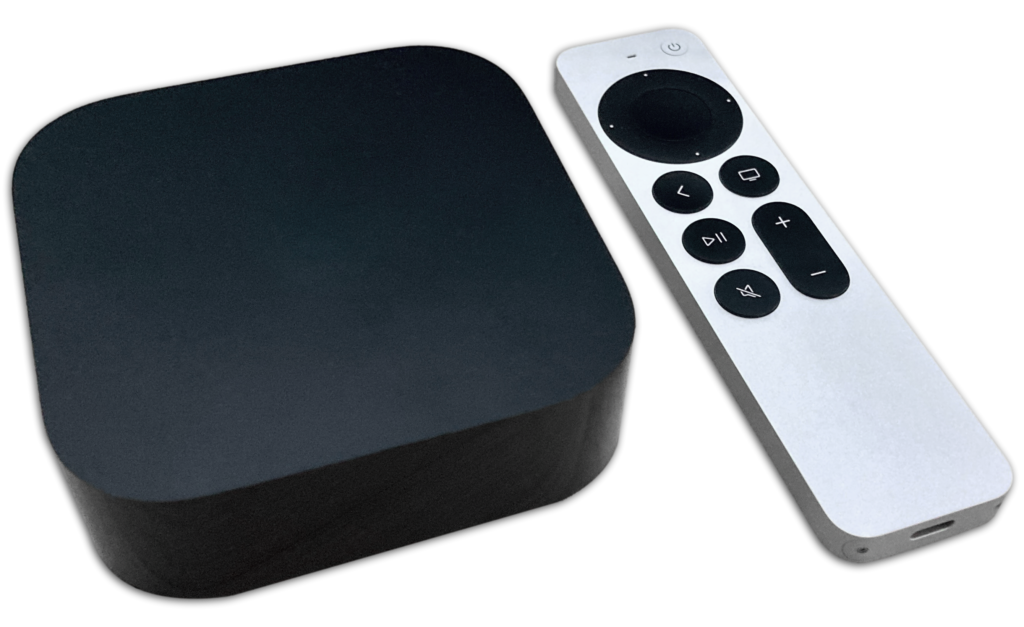
- Next-Generation Chip: Rumors indicate that Apple may integrate a new in-house Wi-Fi and Bluetooth chip—codenamed “Proxima”—which would reduce the company’s reliance on third-party components and improve connectivity. This could lead to faster streaming speeds, better remote responsiveness, and a more stable overall performance.
- Enhanced Ecosystem Integration: The next Apple TV is expected to further integrate with Apple’s smart home ecosystem. Improved support for HomeKit, enhanced Siri capabilities, and tighter integration with other Apple devices could make the new Apple TV an even more central hub for managing your digital lifestyle.
- Design Refinements: While the design of Apple TV has remained largely consistent over the years, subtle refinements may be on the horizon. Expect a thinner profile, reduced power consumption, and perhaps new finishes that complement Apple’s evolving design language.
- Expanded App Functionality: As developers continue to push the boundaries of tvOS, the next-generation Apple TV could offer new interactive features, advanced gaming capabilities, and more personalized content recommendations. The integration of augmented reality (AR) features may also become a possibility, allowing for more immersive viewing experiences.
- Improved Audio and Visual Performance: With support for 4K HDR and Dolby Atmos already established, future models may refine these capabilities further. Enhanced processing power could allow for smoother playback, better upscaling of content, and improved integration with external sound systems.
What This Means for Consumers
For consumers, these potential upgrades translate into a more powerful, versatile, and user-friendly device. Imagine an Apple TV that not only streams your favorite movies and shows in stunning 4K but also serves as the nerve center for your entire smart home. A device that can seamlessly integrate with your iPhone, iPad, and even your car, offering a consistent and connected experience wherever you go.
Enhanced connectivity and improved processing power will make streaming smoother and more reliable, while advanced features like AR integration could open up entirely new ways of interacting with content. Whether you’re a casual viewer or a tech enthusiast, the future of Apple TV promises to deliver a richer and more engaging entertainment experience.
The Strategic Vision Behind Apple TV
Apple’s strategy with Apple TV is clear: it is not just a device for watching movies and TV shows; it is a gateway to a connected ecosystem that enhances every aspect of your digital life. By investing in high-quality original content, seamless integration with other Apple products, and continuous hardware innovation, Apple is positioning Apple TV as a central pillar in the future of home entertainment.
The success of Apple TV+ and the positive reception of tvOS updates are testaments to this vision. Apple is leveraging its brand strength, technological prowess, and design philosophy to create a product that stands out in an increasingly crowded market. As competitors vie for dominance in the streaming space, Apple’s holistic approach—combining hardware, software, and content—gives it a unique advantage.
10. Apple TV in the Global Market
Expanding Beyond the U.S.
While Apple TV started as a U.S.-centric product, its impact has since spread worldwide. International markets have embraced Apple TV, not only as a media streaming device but also as a critical component of the smart home ecosystem. In regions where streaming services are rapidly growing, Apple TV has become synonymous with high-quality digital entertainment and connectivity.
Apple’s ability to tailor its services to local markets has also contributed to its global appeal. The Apple TV app supports multiple languages, regional content preferences, and localized app experiences, ensuring that users around the world can enjoy a personalized experience that caters to their cultural and linguistic needs.
Competition on the International Stage
In the global market, Apple TV faces stiff competition from other digital media players such as Google Chromecast, Amazon Fire TV, Roku, and various smart TV platforms. Despite this competition, Apple TV’s premium design, robust ecosystem integration, and high-quality original content have allowed it to carve out a loyal customer base.
Apple’s strategy of offering a unified ecosystem—where devices seamlessly work together and content is easily accessible across multiple platforms—gives Apple TV a competitive edge. Consumers who own multiple Apple products are more likely to choose Apple TV because of the convenience and reliability it offers.
Cultural Impact and Local Content
One of the challenges for any global device is ensuring that it resonates with local cultures and content needs. Apple has addressed this by making the Apple TV app available in numerous regions and by supporting local languages and regional content channels. This localization strategy helps Apple TV transcend cultural barriers and become a staple in homes around the world.
The availability of region-specific content—be it local sports, news, or entertainment—ensures that Apple TV remains relevant and valuable in diverse markets. Moreover, partnerships with local content providers further enhance the user experience, making Apple TV not just a conduit for international content but also a platform for showcasing local talent.
11. The Future of Home Entertainment: Trends and Predictions
Integration of AI and Machine Learning
As artificial intelligence (AI) and machine learning continue to advance, their integration into home entertainment systems like Apple TV will transform how content is delivered and experienced. Future Apple TV models could feature AI-driven recommendations that learn your viewing habits over time and tailor content suggestions accordingly. Imagine an Apple TV that anticipates your mood and automatically queues up a series of shows or movies to match your preferences.
Machine learning could also enhance other features, such as voice recognition for Siri, enabling more accurate and context-aware responses. In addition, AI could play a role in improving streaming quality by dynamically adjusting video parameters based on your network conditions, ensuring smooth playback even during peak times.
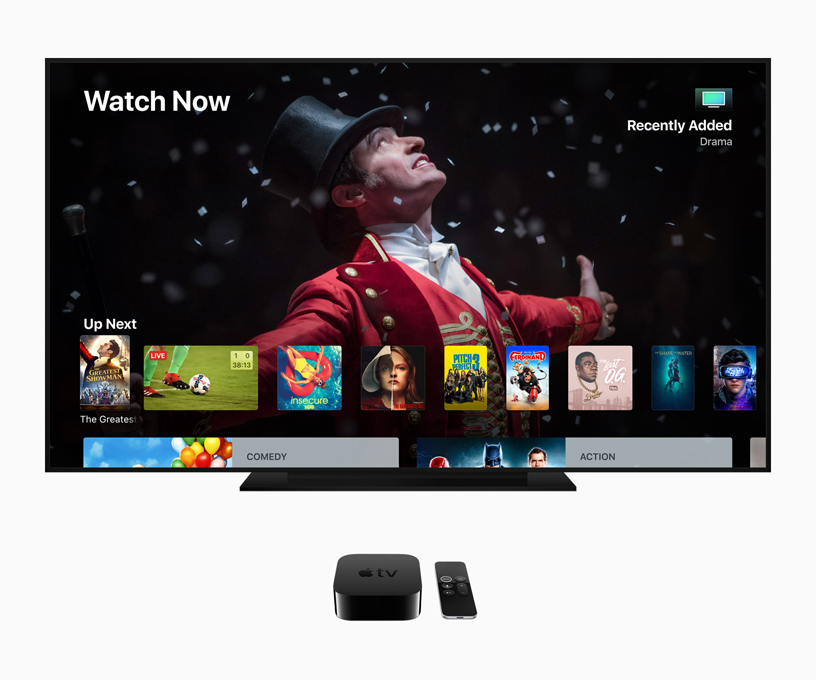
Augmented and Virtual Reality Experiences
The future of entertainment is increasingly immersive, with augmented reality (AR) and virtual reality (VR) set to redefine the way we interact with media. Although Apple TV today is primarily a streaming device, there is potential for it to evolve into a platform that supports AR and VR applications. Imagine watching a nature documentary where you can interact with 3D models of animals, or playing a game that blends digital elements with your physical surroundings—all from your living room.
Apple’s ongoing investments in AR technologies, particularly with the anticipated launch of devices like Apple Vision Pro, suggest that future versions of Apple TV may incorporate AR features to create more engaging and interactive experiences.
Smart Home and IoT Convergence
The convergence of home entertainment and smart home technology is one of the most exciting trends on the horizon. Apple TV’s role as a hub for HomeKit devices is only the beginning. As the Internet of Things (IoT) expands, we can expect Apple TV to integrate even more deeply with connected devices throughout the home.
Future Apple TV models could serve as the central command center for everything from security cameras and doorbells to smart appliances and lighting systems. Enhanced connectivity, improved sensors, and a more powerful operating system will enable seamless communication between devices, allowing for a fully integrated smart home experience. Whether it’s adjusting the ambiance of your living room for a movie night or monitoring your home’s security while you’re away, Apple TV is poised to play a central role in the IoT ecosystem.
Expanding Content Horizons
Content is king in the streaming world, and Apple TV+ continues to invest heavily in original programming. Looking forward, we can expect Apple TV+ to expand its library with more diverse content spanning genres, languages, and formats. From gripping dramas and innovative comedies to thought-provoking documentaries and cutting-edge sci-fi, Apple TV+ aims to offer something for everyone.
Furthermore, as Apple refines its content strategy, we may see more interactive and immersive storytelling formats. The integration of features like SharePlay, which allows for shared viewing experiences, points to a future where content is not only consumed but experienced together, even when viewers are miles apart.
12. How to Get the Most Out of Your Apple TV Today
Maximizing Your Viewing Experience
For existing Apple TV users, there are several tips and tricks to ensure you get the best possible experience:
- Personalize Your Home Screen: Rearrange app icons and create folders to organize your favorite streaming apps, games, and utility tools. This makes navigation easier and more intuitive.
- Utilize AirPlay: Connect your iPhone, iPad, or Mac to your Apple TV using AirPlay to share photos, videos, and even presentations on the big screen. This feature is perfect for family gatherings, business meetings, or simply enjoying your media library on a larger display.
- Optimize Your Settings: Dive into the settings menu to customize aspects like picture and sound quality. Enabling features such as Dolby Vision and Dolby Atmos (if your TV and sound system support them) can dramatically enhance your viewing experience.
- Explore the App Store: With tvOS, Apple TV offers a dedicated App Store. Explore new apps and games that can extend the functionality of your device, from fitness apps and educational tools to unique entertainment experiences.
- Integrate with Your Smart Home: If you have HomeKit-compatible devices, use Apple TV as a home hub to control your smart home. This integration allows you to adjust lighting, control thermostats, and monitor security systems—all from your Apple TV interface.
Tips for New Users
If you’re new to Apple TV, here are some quick tips to help you get started:
- Simple Setup: Unbox your Apple TV, connect it to your television via HDMI, and follow the on-screen instructions to connect to Wi-Fi and sign in with your Apple ID.
- Learn the Remote: Spend some time getting familiar with the Siri Remote. Its touchpad and voice command features can seem a bit different from traditional remotes, but they offer a powerful and intuitive way to navigate your device.
- Customize Your Experience: Take advantage of the personalization options available in tvOS. Set up a Watchlist, download your favorite apps, and explore the various settings to tailor your Apple TV to your preferences.
- Explore Original Content: Don’t forget to check out Apple TV+ for exclusive shows and movies that you won’t find on any other streaming service. With a focus on quality over quantity, Apple TV+ has carved out a niche that is definitely worth exploring.
- Sync Across Devices: Leverage the power of iCloud and continuity features. Your viewing progress, recommendations, and even your Watchlist can sync seamlessly across all your Apple devices, ensuring a consistent experience whether you’re at home or on the go.
13. Challenges and Criticisms: A Balanced Perspective
No product is without its challenges, and Apple TV is no exception. While the device has revolutionized home entertainment, it has also faced criticism and obstacles along the way.
Price and Value Proposition
One of the most common criticisms of Apple TV has been its price point. While many users appreciate the high-quality build and seamless integration with the Apple ecosystem, others question whether the premium price is justified—especially when compared to more affordable competitors like Roku or Amazon Fire TV. However, Apple argues that the price reflects the advanced hardware, software, and exclusive content available through Apple TV and Apple TV+.
Limited Content Library (Initially)
At launch, the first-generation Apple TV and even some early iterations of tvOS offered a relatively limited selection of apps and content compared to other streaming platforms. Critics noted that while the concept was innovative, the execution left much to be desired in terms of variety. Over time, however, Apple has steadily expanded the content ecosystem by opening up the App Store for Apple TV, allowing developers to create and distribute a wide range of apps. Today, the diversity of content—from blockbuster movies and original TV shows to niche apps and games—has largely overcome these early criticisms.
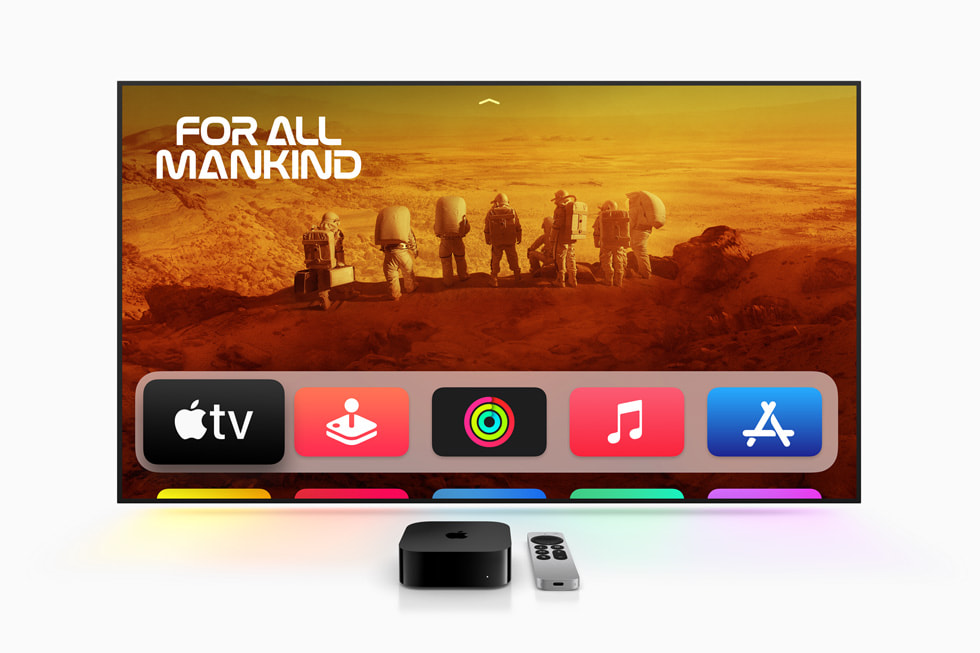
The Learning Curve
The transition from a traditional remote-controlled DVD player to a fully interactive, app-driven media hub was not without its challenges. Some early adopters found the new Siri Remote and the tvOS interface to have a steep learning curve. Users accustomed to conventional television controls sometimes struggled with the gesture-based navigation and voice commands. Apple has continuously refined the user interface and remote control features with each software update, making the experience more intuitive over time.
Ecosystem Lock-In
Another point of debate is Apple’s ecosystem lock-in. Critics argue that Apple TV is most beneficial when used in conjunction with other Apple devices and services, which can be a barrier for users who prefer a more platform-agnostic approach. While the integrated experience is undoubtedly powerful, it also means that non-Apple users may not fully appreciate—or be able to utilize—the device’s full potential.
Privacy and Security
As with all connected devices, privacy and security remain paramount concerns. Apple has long prided itself on robust security measures and strict privacy policies. With Apple TV serving as a central hub for both entertainment and smart home control, ensuring that user data is secure is critical. Apple continues to update tvOS with the latest security features and patches, but users must remain vigilant and follow best practices—such as regular software updates and strong passwords—to maintain a secure environment.
14. Apple TV and the Future of Home Entertainment
Evolving User Expectations
As technology advances, so do user expectations. Modern consumers expect more than just a device for streaming content—they want an all-encompassing entertainment and productivity hub that fits seamlessly into their daily lives. Apple TV’s evolution reflects this shift in expectations, and its continued development will likely focus on further integrating entertainment, gaming, productivity, and smart home features.
Emerging Technologies and Innovation
The future of Apple TV looks bright, with several emerging technologies poised to redefine what a media player can do. For example, augmented reality (AR) and virtual reality (VR) technologies may soon find their way into the Apple TV ecosystem, offering immersive experiences that blend digital content with the real world. Imagine watching a sports game where real-time statistics and player bios appear as holographic overlays, or exploring a nature documentary where you can interact with 3D models of animals.
Artificial intelligence (AI) and machine learning are also expected to play increasingly important roles. Future Apple TV models may feature AI-driven personalization that tailors content recommendations based on your viewing habits and even your mood. This could lead to a more engaging and satisfying viewing experience, where the device anticipates your needs and adapts dynamically to your preferences.
Expanding the Ecosystem
Apple has always been at the forefront of ecosystem integration, and Apple TV is a critical component of this strategy. Future updates may further enhance how Apple TV interacts with other Apple devices—from seamless continuity features that allow you to start watching a show on your iPhone and finish it on your TV, to deeper integration with HomeKit for smart home control. The convergence of hardware, software, and services will continue to be a hallmark of Apple’s strategy, ensuring that each device in the ecosystem complements the others.
Global Reach and Market Expansion
While Apple TV started as a U.S.-centric product, its influence has grown worldwide. As streaming becomes a global phenomenon, Apple is likely to expand its market reach further by tailoring its content and services to meet the needs of diverse international audiences. This might include localized content, multilingual support, and region-specific partnerships that enhance the overall user experience. The Apple TV app is already available in numerous countries, and future iterations may further bridge cultural and geographical gaps, making high-quality streaming accessible to an even broader audience.
The Role of Original Content
Apple TV+ has already demonstrated that high-quality original content can drive subscriber growth and boost brand loyalty. Looking ahead, Apple is expected to continue investing heavily in original programming, forging partnerships with renowned creators and studios. The success of series like “Ted Lasso,” “Severance,” and “The Morning Show” serves as a blueprint for future investments in storytelling that resonates on a global scale. As the competitive streaming landscape evolves, Apple’s focus on quality over quantity may well set it apart from rivals and ensure a steady stream of critically acclaimed content.
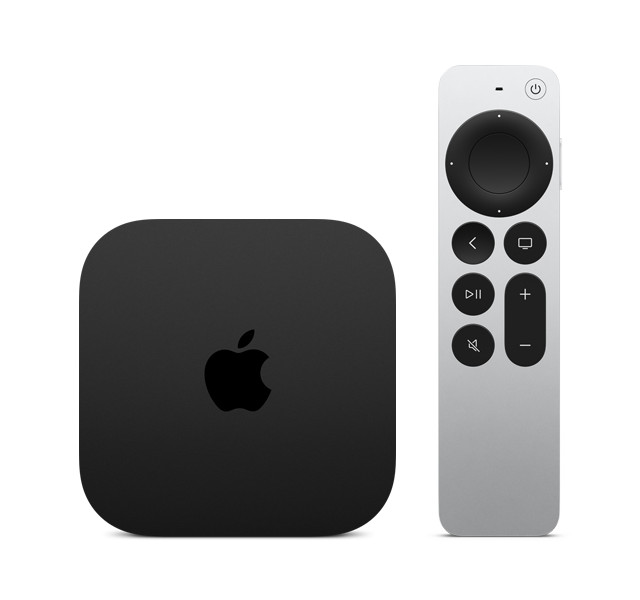
Challenges Ahead
Of course, the future is not without challenges. The streaming market is highly competitive, and maintaining a balance between quality, affordability, and user experience will be key. Apple will need to continually innovate to stay ahead of the curve, addressing issues such as rising content costs, evolving consumer expectations, and potential regulatory hurdles. However, given Apple’s track record of innovation and its integrated ecosystem, the company is well-positioned to navigate these challenges and continue shaping the future of home entertainment.
15. Conclusion: A Revolution That Continues to Evolve
From its inception as a modest iTunes player to its current status as a sophisticated, multi-functional home entertainment hub, Apple TV has continually redefined what it means to enjoy digital media at home. Its evolution has been marked by relentless innovation—transitioning from a device that simply streamed content to one that integrates deeply with the entire Apple ecosystem, supports cutting-edge original programming via Apple TV+, and even serves as a smart home hub.
As we look to the future, Apple TV is set to play an even more prominent role in our digital lives. With rumors of next-generation hardware improvements, enhanced connectivity features, and the potential integration of emerging technologies such as AR and AI, the device promises to remain at the forefront of the home entertainment revolution. For consumers, this means a more personalized, immersive, and convenient viewing experience. For the industry, it signals that the boundaries of what a media player can do are continually expanding.
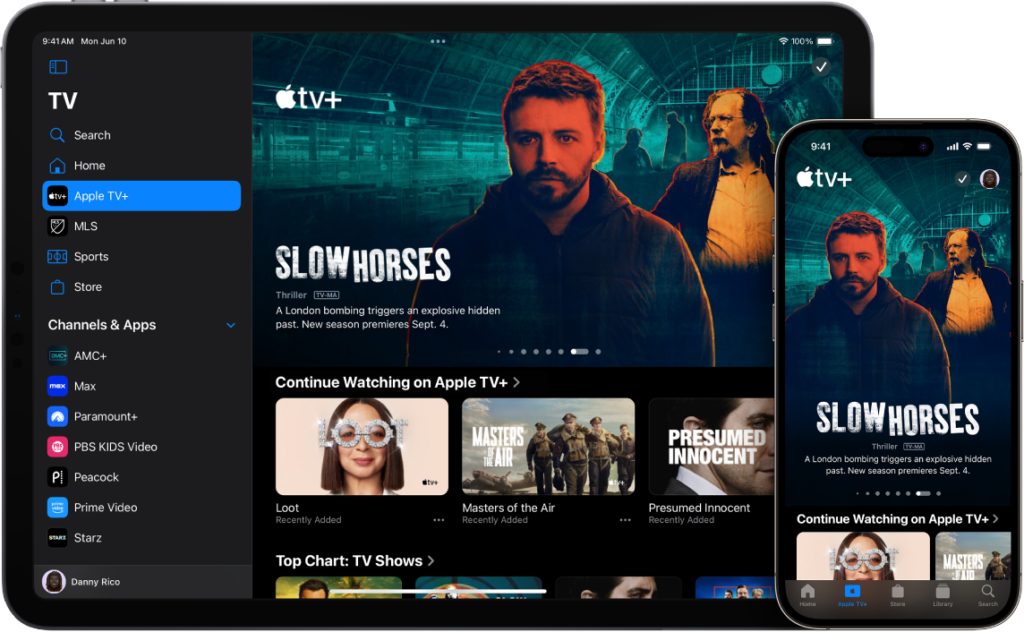
Ultimately, Apple TV’s story is one of transformation—a journey that mirrors the rapid pace of technological change and the evolving ways in which we consume content. Whether you are a long-time Apple enthusiast or a newcomer eager to experience the latest in digital entertainment, Apple TV stands as a testament to Apple’s vision of a connected, seamless, and enriched home life.
As technology continues to evolve, so too will Apple TV. Its commitment to quality, innovation, and integration ensures that it will remain a cornerstone of home entertainment for years to come. In a world where digital experiences are increasingly intertwined with every facet of our lives, Apple TV is more than just a device—it’s a revolution that continues to evolve.




